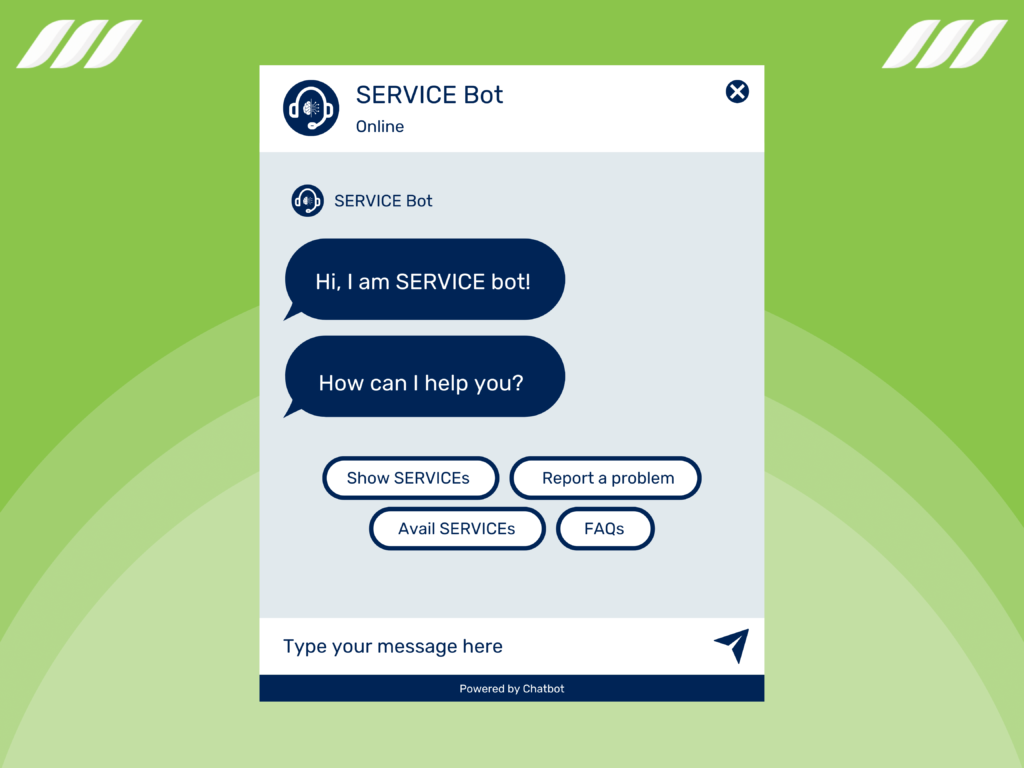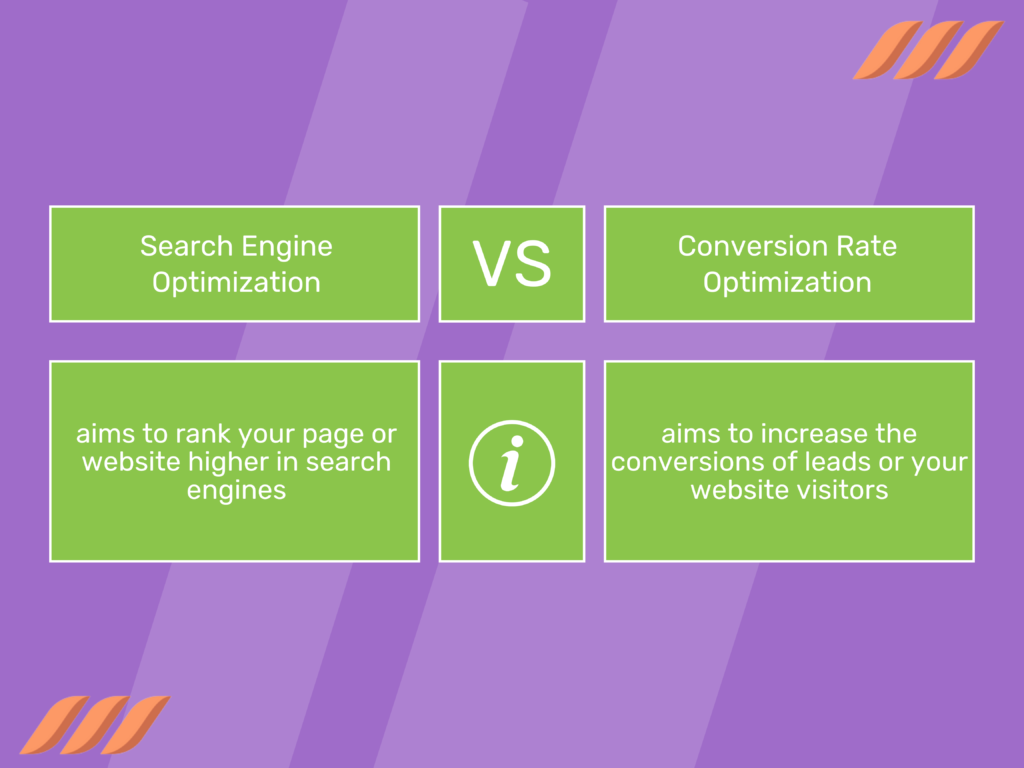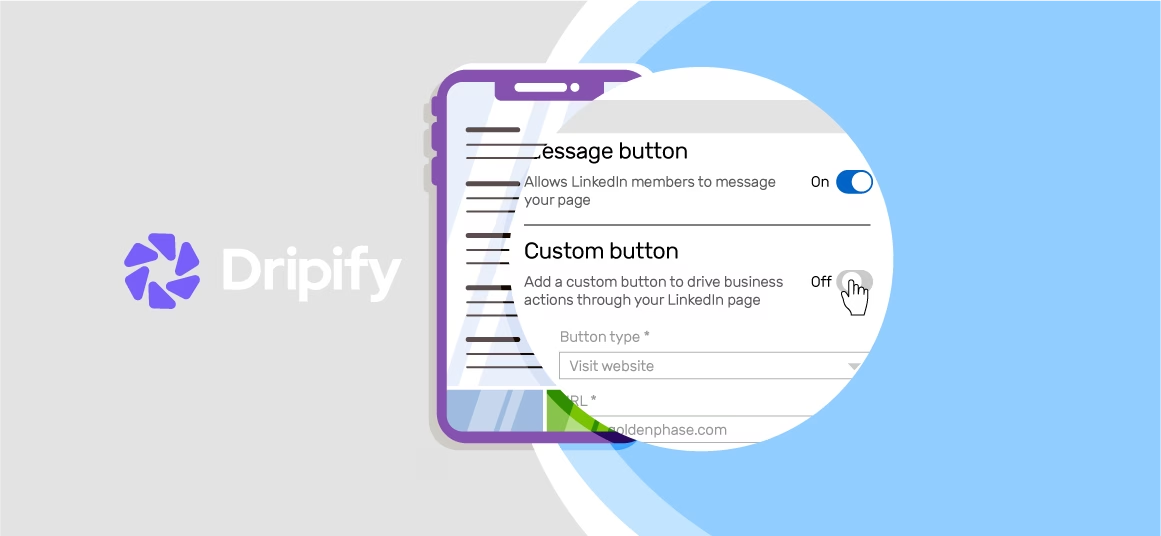Conversion is the ultimate test of any website or sales campaign. The conversion rate measures the number of users who take action based on your site, not just the traffic your website draws.
A higher conversion rate means more of your website users take the desired action, such as buying a product or service or signing up for your email list.
- What Is a Conversion?
- What Is a Conversion Rate?
- What Is Conversion Rate Optimization?
- How to Calculate Conversion Rate?
- What Is the Ideal Conversion Rate?
- Why Invest in Conversion Rate Optimization?
- 1. Removes Uncertainty from Decisions
- 2. Improves User Experience
- 3. Brings More Traffic
- 4. High Return on Investment (ROI)
- 5. Affordable & Cost-Efficient
- 6. Stay on Top of the Competition
- Conversion Rate Optimization Strategies
- 1. Add Catchy CTAs in Blogs
- 2. Create Lead Flows
- 3. Improve Your Landing Page
- 4. Add Chat Bots to Your Web Pages
- 5. Simplify Customer Experience
- 5 Steps of Conversion Rate Optimization
- Step 1: Test and Research
- Step 2: Work on Finding Solutions
- Step 3: Test the Changes
- Step 4: Analyze the Results
- Step 5: Repeat the Cycle!
- SEO vs CRO
- Conversion Rate Optimization Best Practices
- 1. Stop the Guess Game
- 2. Get Rid of Complexities
- 3. Testing is the Key!
- 4. Quality Assurance
- 5. Earn Trust
- Tips to Optimize Conversion Rate
Conversion rate optimization (CRO) is the key factor in a business’s growth since it is directly linked to sales. CRO allows companies to keep track of leads, nurture them, and convert them into potential customers.
It is essential to understand how conversion optimization works so you can boost your company’s sales and growth like a pro. As always, we are here to kickstart your learning process!
This guide will spill all the secrets of conversion optimization, from tools to strategies and best practices.
What Is a Conversion?
Before we dive into the details, let’s go through the basics. As a business owner, you might be familiar with the term “leads.” Conversion is the process of changing the status of those leads.
Let’s say a visitor on your website becomes your email subscriber. Or a lead you found on LinkedIn changes into a paying customer. These are good examples of a conversion!
What Is a Conversion Rate?
Conversion rate is the number of leads or website visitors that change their status. For example, how many people went from being your website visitors to your paid customers? Or how many leads you found for your B2B business that bought your product or service?
You can calculate the conversion rate with the help of various analytical tools. Or maybe you’d want to calculate it with the help of a simple formula that we’ll share below in this guide.
What Is Conversion Rate Optimization?
Conversion rate optimization (CRO) is the process of increasing the number or percentage of leads or website visitors to perform some sort of action. Simply put, CRO helps you attract leads, improve their experience, and make them purchase your products or services, click on your desired link, fill out a form, or do similar actions.
You must take certain measures to attract and persuade the leads to change their status. For example, enhanced copy of your website, incredible UX and design, better calls to action, or anything that engages your leads.
In short, CRO is the most crucial part of any marketing campaign, especially in the B2B world. But how do you calculate the conversion rate? Let’s have a look!
How to Calculate Conversion Rate?
As we mentioned above, you can calculate the conversion rate with the help of a simple formula. All you have to do is divide the number of conversions by the total number of visitors on your website and multiply the result by 100. Here is a conversion rate optimization formula:
- Conversion Rate = Number of Conversions ÷ Number of Visitors × 100
What Is the Ideal Conversion Rate?
There is no such thing as an “ideal” conversion rate. The higher the rate, the better! Still, a good conversion rate optimization stats should be between 2% to 4%. This rate can vary depending on the type of business, conversion goals, and target audience.
For example, B2B conversion rate optimization statistics shows that you should aim for at least 3%. For software businesses, it should be 7%, and so on.
Related article: B2B Sales Strategies to Grow Your Business
Why Invest in Conversion Rate Optimization?

CRO allows you to attract more leads, boost your sales, and grow your business. However, these are not the only benefits of optimizing your conversion rate. In fact, it is a broad concept that offers many other benefits, including the following:
1. Removes Uncertainty from Decisions
Conversion optimization allows you to make more informed decisions about your business and strategies with the help of data. Before CRO, businesses used to make decisions with the “I think” factor – “I think changing the strategy would increase the sales,” “I think customers and leads would like this better,” etc.
Luckily, CRO removes uncertainty from decision-making. It gives you insights into the strategies that work for your business and those that need improvement. CRO puts authentic data and figures in front of you to analyze and evaluate the results.
2. Improves User Experience
What is the main factor that stops the conversion of leads? A bad user experience! Many leads leave your website because of complicated UX and UI. The good news is that CRO helps you identify and close the loopholes in your website’s UX and UI.
With CRO, you know how much time a lead spends while taking certain actions on the website and how much time it takes them to complete the whole process. If you find a lead takes longer than expected, they will likely be confused. This allows you to look into the interface and UX design and make improvements to make your leads’ experience seamless.
3. Brings More Traffic
Conversion rate optimization allows you to improve your overall website; content, copy, interface, load speed, time-on-page, and much more. All these improvements will eventually rank your website higher in search engines and draw more traffic and more leads.
Related article: Increase Organic Traffic to Your Website Using LinkedIn
4. High Return on Investment (ROI)
Every business aims to achieve a high return on investment, and that’s what businesses exist for. You’ve invested in ads, digital marketing campaigns, email marketing, LinkedIn marketing, and much more to attract leads and convert them into paying customers.
CRO is a critical element that is directly linked to your ROI. The improvements you make to your website through CRO will convert more leads into clients. This translates into a higher ROI for your business.
5. Affordable & Cost-Efficient
CRO is a low-cost marketing technique that produces long-term ROI. It doesn’t cost much to test different text variations or images to find the most effective elements for your site visitors.
You can save even more money with continued optimization besides increasing your sales because CRO decreases your promotional spending. You invest a very minimum amount in CRO and gain high results in return.
6. Stay on Top of the Competition
Doing CRO testing frequently helps you quickly track user behavior and website problems. You can then take fast action to improve the user experience. This way, you will always stay one step ahead of your competitors.
Conversion Rate Optimization Strategies
Here are some effective and proven conversion rate strategies that you can test for your business:
1. Add Catchy CTAs in Blogs
Having a blog on your website is the best way to draw targeted traffic. That said, adding creative and catchy text-based Calls to Action (CTAs) in your blog posts will help persuade your leads to take your desired actions.
For example, you can use CTAs in your blog posts to persuade the readers to click on a link, sign up for emails and newsletters, etc. Moreover, you could include CTA buttons in your blog posts, such as “Download Now,” “Subscribe Now,” or “Buy Now.” In short, the copy of your CTA text should make the readers want to click!

Here are some examples of good and catchy CTAs for your inspiration:
- Need Help Getting Started With Your Search? Click on the link to purchase a handy guide to help you kickstart!
- Real Food Meets Real Drinks – Order Now (Hyperlinked CTA Button)!
- Get an Instant Quote for your next interior designing project! – (Add Hyperlinked CTA Button)
- Tired of the summer tan? Here is the magical product you can use! – (Add Hyperlinked CTA Button)
- Are you looking for ways to increase your company’s sales? Keep reading for the top 5 strategies to supercharge your sales!
2. Create Lead Flows
Lead flows are pop-ups that appear on websites to grab visitors’ attention and lead them to take certain actions. You can play around with different types of lead flows to settle for the most effective on; drop-down banners, slide-in-box, and pop-up boxes. Lead flows are super effective when it comes to converting website visitors.
3. Improve Your Landing Page
A good landing page will not only draw targeted traffic but also help turn your visitors into leads and your leads into customers. Make sure to optimize your landing pages, test them, and improve their design and copy.
Plus, make sure to optimize your landing pages for both web and mobile users. Don’t forget to check the content, images, and forms for any issues. You may also want to do A/B testing of different versions of landing pages to pick the best one that can boost your conversion rate.
4. Add Chat Bots to Your Web Pages

Have you ever seen live chatbots appearing when you visit some website? Well, this real-time chat CRO strategy is crucial to increasing conversion! It helps your leads to connect and chat with you in real-time if they need any guidance and support regarding the process/offers/details.
Your website visitors or leads can quickly message your live chatbots to ask questions about pricing or products and get answers in seconds. Plus, you can send your leads a message using chatbots if you notice them spending more time on a page.
Here’s an example message you can feed in your chatbot to send to your leads: “Hey, need any help? I’m here to assist you!”.
The best part? You can easily add this feature to your website with the help of live chat software. Or maybe you’d want to ask your website developer to integrate this feature for you.
5. Simplify Customer Experience
Do you know what is the biggest mistake that developers and marketers make? It is making the user interface of the website super complicated and confusing. In this case, the leads quickly exit your website and opt for your competitor with a better UX.
We recommend you always keep your website design and interface as simple as possible. Make sure all the pages like shipping details, privacy policy, product pages, about us, etc., are visible.
Also, make the checkout process as seamless as you can. Fewer design elements will make your website simple so that it loads quickly and doesn’t test the visitors’ patience.
5 Steps of Conversion Rate Optimization
What are the steps of conversion optimization? Here is a step-by-step guide on how CRO works:
Step 1: Test and Research
The first step is to analyze, test, and research where you need to improve your website. You can do this by visiting your website like a customer and asking yourself questions like these:
- Is the interface convenient?
- Is the buying and payment process seamless or confusing?
After testing and analyzing, identify where you need to improve and set goals for yourself. You can also analyze your website using online tools like Google Analytics, Crazy Egg, and ClickTale and see the main reasons why most visitors leave your website.
You can even contact your customers via calls or emails and ask for honest feedback about the usability and interface of the website and customer support. Doing this will help you identify and close loopholes.
Step 2: Work on Finding Solutions
Second up, list down all the identified issues in a spreadsheet and work on solving them to improve your conversion rate. Sit down with your website and content team and find solutions to minimize usability issues. Also, try to be very creative and open-minded while finding solutions.
When you have a list of all the possible situations, it’s time to critically analyze what solutions will be the best for your conversion rate optimization. Next, convey those solutions to your development team and don’t delay the process of making improvements.
Step 3: Test the Changes
After your development team implements the changes, it’s time to test them before going live. Make sure to test all the changes one by one and analyze how it affects your conversion rate. It is a good idea to do split testing of your website pages to pick the versions that deliver higher conversion.
Step 4: Analyze the Results
Finally, it’s time to analyze the results of your CRO. The goal is to create a list of the strategies and changes that worked for you and those that failed to deliver your desired outcomes.
Step 5: Repeat the Cycle!
Conversion rate optimization is a continuous process. You need to repeat the process to sustainably improve your sales and revenue and bring more traffic to your website.
SEO vs CRO

People often confuse the two terms Search Engine Optimization (SEO) and Conversion Rate Optimization (CRO). However, these two strategies are opposite of each other. SEO aims to rank your page or website higher in search engines like Google. In contrast, CRO’s goal is to increase the conversions of leads or your website visitors.
Though these two strategies are different, they help to flourish your business as they are somehow linked. After all, you can’t perform CRO when you are not even ranking higher in search results. Therefore, we recommend combining both these strategies for your website and landing pages.
Conversion Rate Optimization Best Practices
Now that we have gone through the five steps of conversion rate optimization, it’s time to take a brief look at some best CRO practices that every business should adopt. Read on!
1. Stop the Guess Game
Conversion rate optimization gives you the freedom to make informed decisions based on research, testing, and analysis. It allows you to take the guessing and “I think” factors out from your marketing campaigns and turns the focus on CRO for your decisions and strategies.
2. Get Rid of Complexities
As we have briefly mentioned above, a complex website interface will only make the visitors quit your site. CRO helps you improve your website’s interface, making it super smooth and convenient for visitors. This ultimately helps increase your conversion rate as users find it easy to consume content and make buying decisions.
3. Testing is the Key!
Testing is a crucial part of CRO. It helps you quickly identify and resolve website problems like speed, design, UI, content, etc. Plus, A/B testing of design elements, CTAs, and content allow you to pick the best-performing pages for your website.
4. Quality Assurance
You experimented with different website pages, designs, and content to pick the most effective one. But before taking it mainstream, it makes sense to test the page for quality assurance. Doing so will help you identify any problems beforehand, so you don’t have to constantly take down your website for maintenance.
5. Earn Trust
Your visitors or leads will never convert if they don’t trust you. As such, consider adding your license, testimonials, and certifications to your website. Doing so will help prove your authenticity and reliability makes sense.
Tips to Optimize Conversion Rate
Here are a few bonus tips to step up your conversion rate optimization game:
- Ask your customers to leave their honest reviews on independent review sites and social media.
- Add customer reviews and testimonials to your website. All these things ensure that you are a reliable and trustable business.
- Offer multiple payment options for potential customers.
- Always move forward with a proper content strategy.
- Keep your website content to the point and free from distractions.
- Always set proper goals before moving forward with the optimization process.
- Optimize your CTAs as much as possible.
- Broaden your reach through content marketing.
Conclusion
Conversion rate optimization is a core element of any digital marketing campaign. It helps identify problems in your website, or sales funnel and resolve those issues so your leads can have a seamless experience. While it requires some investment, the benefits are worth it; higher conversion rates, more sales, better ROI, and more profits.
Implementing CRO may seem complicated at first. But the process becomes straightforward once you get the hang of it and have the right team to go about it. Follow the strategies, steps, and practices explained to kickstart your CRO process. Remember to be patient through the journey, and you will notice your sales and conversion boost up in no time!


![Email Outreach Tracking [Tips, Tricks and Tools]](https://dripify.io/wp-content/uploads/2025/02/11-7-png.avif)
